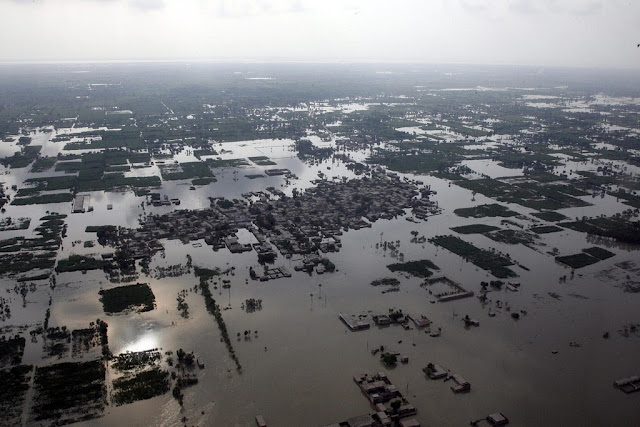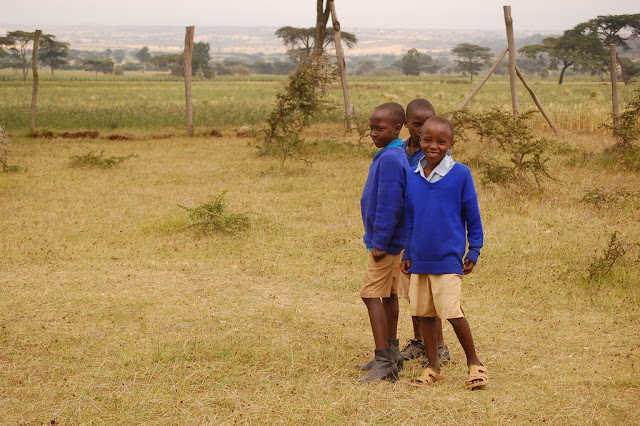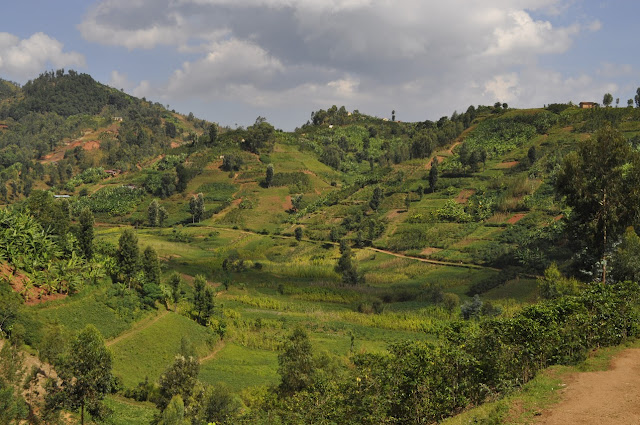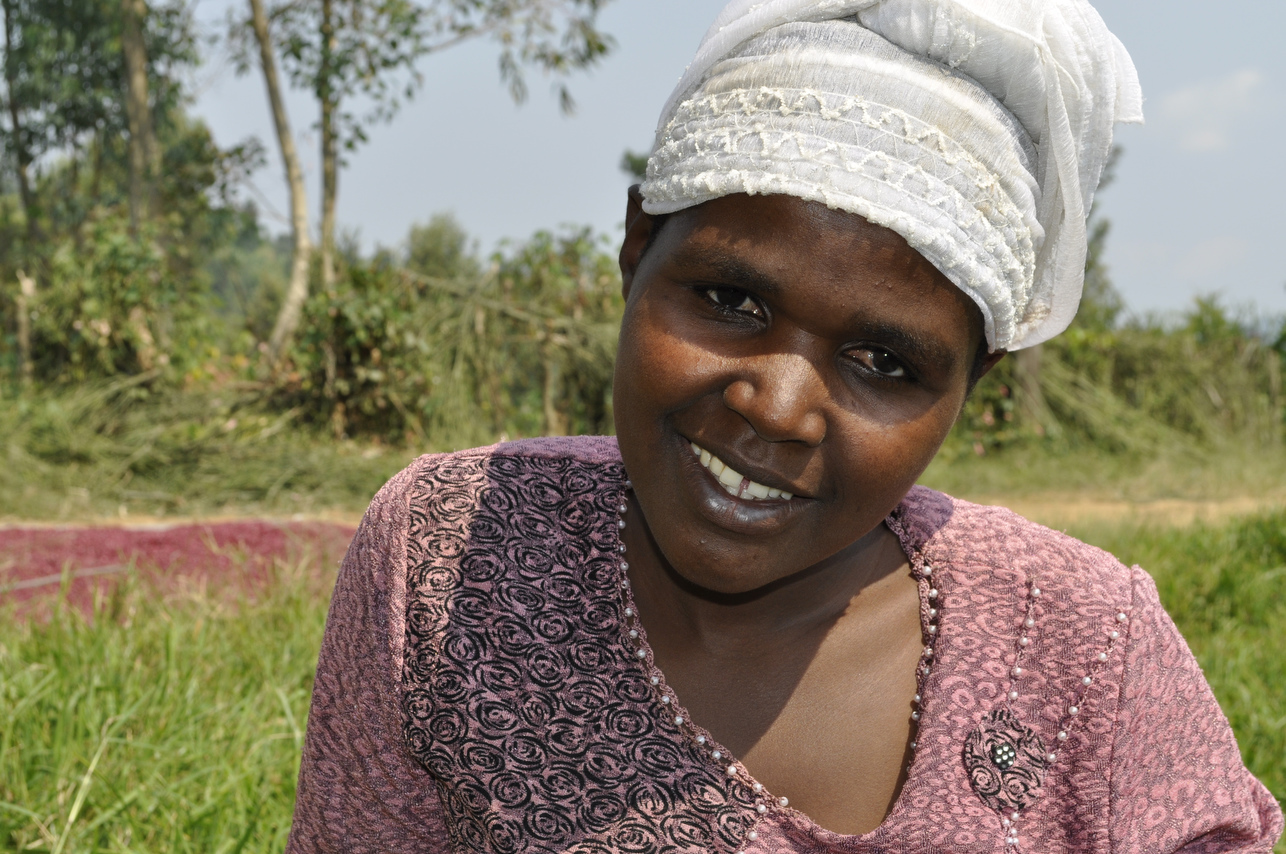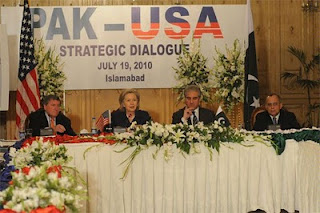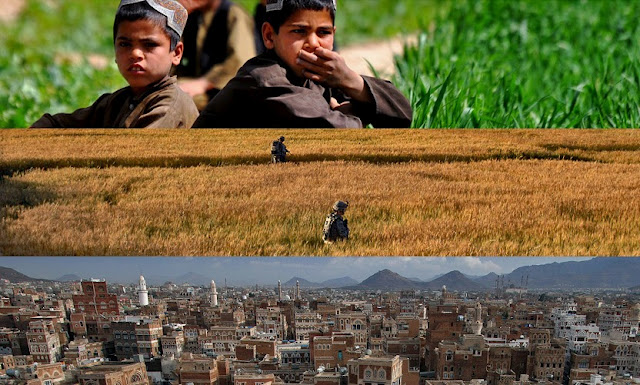-
Historic Floods Plague Pakistan
›August 19, 2010 // By Shawna Cuan“Staggered by the scale of destruction from this summer’s catastrophic floods, Pakistani officials have begun to acknowledge that the country’s security could be gravely affected,” reports the Washington Post. The Pakistani government – already cash-strapped between fighting “the war on terror” and trying to prevent an economic collapse – now faces recovering from the worst flooding in over 80 years.
-
Land, Education, and Fertility in Rural Kenya
›August 10, 2010 // By Wilson Center StaffExcerpted from a summary on the Population Reference Bureau‘s website, by Karina Shreffler and F. Nii-Amoo Dodoo. The original version of this article appeared in Population and Environment 30, no. 3 (2009): 75-92.
Little is known about the role of land inheritance in the link between land availability and fertility. The recent transition from high to lower levels of fertility in some African countries presents an opportunity to clarify the underlying causes of this decline, since the individuals involved in the transitions are still alive.
Using data from focus group discussions with people whose childbearing occurred before and during the rapid and unexpected fertility decline in Nyeri District in rural Kenya, we examined the impact of diminishing land availability, farm size, and inheritance patterns on fertility decisionmaking and behavior. The results shed new light on the role of education, long considered the key determinant of fertility transition.
Our research suggests that rather than inheritance being an external factor affecting fertility behavior, parents in Nyeri District chose to educate their children after realizing they would not be able to bequeath a sufficient amount of land. Our work provides evidence of the importance of considering the influence of environmental factors on demographic processes, particularly in regions of resource dependence.
Continue reading on PRB.
For more on Kenya’s youth, see New Security Beat‘s interview with Wilson Center Scholar Margaret Wamuyu Muthee.
Photo Credit: “Olaimutiai Primary School (Maasai Land, Kenya),” courtesy of flickr user teachandlearn. -
Stephanie Hanson Reports on PHE in Agricultural Development and Rwanda’s ‘One Acre Fund’
›Driving from Kigali into rural Rwanda, the hills that flank either side of the paved road are covered with bananas, maize, coffee, and beans under cultivation. Most Rwandans are farmers, using any bit of available land to feed their families and generate income. In this country—the most densely populated in Africa—little arable land is left untended.
My organization, One Acre Fund, offers loans and education to smallholder farmers in Kenya and Rwanda. We work with 18,000 farmers in three districts in the southwestern and western part of Rwanda, where we are know as Tubura, which means “multiply” in Kinyarwanda.
Though One Acre Fund is not a traditional population, health, and environment (PHE) project, agricultural development work inherently is PHE work, particularly in Rwanda, which faces significant population and environment challenges.
Our farmers have small plots of land because Rwanda’s population density is so high—375 people per square kilometer, higher than Japan—leaving only .13 hectares of arable land per person. They struggle to grow enough food because it’s difficult to support a big family on a small piece of land, especially without access to high-quality seed and fertilizer.
When farmers don’t grow enough to ensure basic food security for their families, their children are malnourished, which makes them more susceptible to illness.
Finally, agriculture both depends on and affects the environment. Farmers need favorable growing conditions—good soil and adequate rainfall—for a good harvest. Sustainable agriculture practices, such as composting and preventing soil erosion, ensure the environment remains healthy to support future farming.One Acre Fund is acutely aware of the challenges that our farmers face due to high population density, food insecurity, and environmental degradation. We offer a service model that addresses all the needs of a smallholder farmer: financing, farm inputs, education, and market access.
When a farmer enrolls with One Acre Fund in Rwanda, she joins as part of a group of 6-15 farmers. She receives an in-kind loan of seed and fertilizer, which is guaranteed by her group members. One Acre Fund delivers this seed and fertilizer to a market point within two kilometers of where she lives. A field officer provides in-field training on composting, techniques to prevent soil erosion, land preparation, planting, fertilizer application, and weeding.
Over the course of the season, the field officer monitors the farmer’s fields. At the end of the season, he trains her on how to harvest and store her crop. One Acre Fund also offers a harvest buyback program that farmers can choose to participate in.
On average, One Acre Fund farmers double their farm income per acre in one growing season. Ninety-eight percent of our farmers repay their loans, which are due several weeks after harvest.
With their increased harvests, One Acre Fund farmers are able to feed their children, which reduces malnutrition. Anecdotally, we also know that One Acre Fund children experience less illness; this year, we are working to incorporate health indicators into our monitoring and evaluation work.
At a harvest buyback last month, I met many farmers who had benefited from One Acre Fund’s services. One woman, Tamar, had sold 400 kilograms (880 pounds) of beans at the previous season’s buyback, which earned her roughly 132,000 Rwandan francs ($235 USD). She told me that she was using the money to build a bigger home for the six of her ten children who lived at home.
However, Tamar really wanted to buy a cow, but she knew that she would not earn enough money this year to afford one. With so many children, she struggled to earn enough money to invest in something that might generate additional income for her and her family.
Another woman, Medeatrice, had also made $235 USD from the sale of her beans. With that income, she had opened a small shop with her husband in a nearby market. Unusually for Rwanda, where the average woman has 5.5 children, Medeatrice only had one, a three-year old boy named Prince. I asked her if she planned to have more children.
“I only want one more child,” she told me. “If I only have two children, it is easy to educate and to take care of them.”
The Rwandan government has invested in educating its population on family planning, but it will take time for birth rates to drop. For now, families with five, six, or nine children are not uncommon.
However, research shows that when women have increased access to economic opportunities, birth rates drop. One Acre Fund is focused on helping Rwanda’s families increase their harvests so that they not only have enough to eat, but they can start investing in their futures.
Guest Contributor Stephanie Hanson is the director of policy and outreach at One Acre Fund.
Photo Credit: Rwanda’s hills and Medeatrice, courtesy of Stephanie Hanson. -
In Pakistan, Clinton Calls for Human Security; USAID’s Shah Commends Birth Spacing
›July 20, 2010 // By Russell Sticklor In Islamabad yesterday, Secretary of State Hillary Clinton acknowledged longstanding Pakistani concerns that the U.S.’s ongoing mission in the country is solely military in nature. However, Clinton asserted at the opening of the second U.S.-Pakistan Strategic Dialogue that the “future demands a comprehensive human security, a security based on the day-to-day essentials like jobs, schools, clinics, food, water, fuel, equal access to justice, [and] strong, accountable public institutions.” To that end, she announced a $500 million assistance package earmarked largely for new agricultural and hydroelectric infrastructure development, as well as the construction of new hospitals and other health infrastructure.
In Islamabad yesterday, Secretary of State Hillary Clinton acknowledged longstanding Pakistani concerns that the U.S.’s ongoing mission in the country is solely military in nature. However, Clinton asserted at the opening of the second U.S.-Pakistan Strategic Dialogue that the “future demands a comprehensive human security, a security based on the day-to-day essentials like jobs, schools, clinics, food, water, fuel, equal access to justice, [and] strong, accountable public institutions.” To that end, she announced a $500 million assistance package earmarked largely for new agricultural and hydroelectric infrastructure development, as well as the construction of new hospitals and other health infrastructure.
Family planning was another key element in this week’s U.S-Pakistani talks. A U.S. delegation headed by USAID Administrator Rajiv Shah met with top Pakistani health officials to discuss the strategic importance of birth spacing. Both sides agreed that encouraging women to extend the interval between bearing children would not only improve maternal and child health, but also start to bring Pakistani’s population growth rate down to a more sustainable level—a goal fully explored at a recent Wilson Center conference on Pakistan’s population challenge.
As Pakistani demographer Zeba Sathar told New Security Beat in an interview at the conference, educating young women and empowering them to control their own reproductive health will allow them to “take care of their fertility and their family size themselves”—a development that could ease Pakistan’s resource crunch and reduce traditional gender inequities in the years to come.
Sources: Daily Times (Pakistan), International Business Times (U.K.), Los Angeles Times, Times of India, U.S. Agency for International Development.
Photo Credit: “Secretary Clinton Travels to Pakistan,” courtesy of the State Department. -
New Security Challenges in Obama’s Grand Strategy
›June 4, 2010 // By Schuyler NullPresident Obama’s National Security Strategy (NSS), released last week, reinforces a commitment to the whole of government approach to defense, and highlights the diffuse challenges facing the United States, including international terrorism, globalization, and economic upheaval.
Following the lead of the Quadrennial Defense Review released earlier this year, the NSS for the first time since the Clinton years prominently features non-traditional security concerns such as climate change, population growth, food security, and resource management:Climate change and pandemic disease threaten the security of regions and the health and safety of the American people. Failing states breed conflict and endanger regional and global security… The convergence of wealth and living standards among developed and emerging economies holds out the promise of more balanced global growth, but dramatic inequality persists within and among nations. Profound cultural and demographic tensions, rising demand for resources, and rapid urbanization could reshape single countries and entire regions.
By acknowledging the myriad causes of instability along with more “hard” security issues such as insurgency and nuclear weapons, Obama’s national security strategy takes into account the “soft” problems facing critical yet troubled states – such as Pakistan, India, Afghanistan, and Somalia – which include demographic imbalances, food insecurity, and environmental degradation.
Not surprisingly, Afghanistan in particular is highlighted as an area where soft power could strengthen American security interests. According to the strategy, agricultural development and a commitment to women’s rights “can make an immediate and enduring impact in the lives of the Afghan people” and will help lead to a “strong, stable, and prosperous Afghanistan.”
The unique demographic landscape of the Middle East, which outside of Africa has the fastest growing populations in the world, is also given intentional consideration. “We have a strategic interest in ensuring that the social and economic needs and political rights of people in this region, who represent one of the world’s youngest populations, are met,” the strategy states.
Some critics of that strategy warn that the term “national security” may grow to encompass so much it becomes meaningless. But others argue the administration’s thinking is simply a more nuanced approach that acknowledges the complexity of today’s security challenges.
In a speech on the strategy, Secretary of State Clinton said that one of the administration’s goals was “to begin to make the case that defense, diplomacy, and development were not separate entities either in substance or process, but that indeed they had to be viewed as part of an integrated whole and that the whole of government then had to be enlisted in their pursuit.”
Compare this approach to President Bush’s 2006 National Security Strategy, which began with the simple statement, “America is at war” and focused very directly on terrorism, democracy building, and unilateralism.
Other comparisons are also instructive. The Bush NSS mentions “food” only once (in connection with the administration’s “Initiative to End Hunger in Africa”) and does not mention population, demography, agriculture, or climate change at all. In contrast, the 2010 NSS mentions food nine times, population and demography eight times, agriculture three times, and climate change 23 times – even more than “intelligence,” which is mentioned only 18 times.
For demographers, development specialists, and environmental conflict specialists, the inclusion of “new security” challenges in the National Security Strategy, which had been largely ignored during the Bush era, is a boon – an encouraging sign that soft power may return to prominence in American foreign policy.
The forthcoming first-ever Quadrennial Diplomacy and Development Review by the State Department will help flesh out the strategic framework laid out by the NSS. It is expected to provide more concrete policy for integrating defense, diplomacy, and development. Current on-the-ground examples like USDA embedding in Afghanistan, stepped-up development aid to Pakistan, and the roll-out of the administration’s food security initiative, “Feed the Future,” are encouraging signs that the NSS may already be more than just rhetoric.
Update: The Bush 91′ and 92’ NSS also included environmental considerations, in part due to the influence of then Director of Central Intelligence, Robert Gates.
Sources: Center for Global Development, CNAS, Los Angeles Times, State Department, USAID, White House, World Politics Review.
Photo Credit: “Human, Food, and Demographic Security” collage by Schuyler Null from “Children stop tending to the crop to watch the patrol” courtesy of flickr user isafmedia, “Combing Wheat” courtesy of flickr user AfghanistanMatters, and “Old Town Sanaa – Yemen 49” courtesy of flickr user Richard Messenger. -
Can Food Security Stop Terrorism?
›May 28, 2010 // By Schuyler NullUSAID’s “Feed the Future” initiative is being touted for its potential to help stabilize failing states and dampen simmering civil conflicts. Speaking at a packed symposium on food security hosted by the Chicago Council last week, USAID Administrator Rajiv Shah called food security “the foundation for peace and opportunity – and therefore a foundation for our own national security.”
-
Urbanization, Climate Change, and Indigenous Populations: Finding USAID’s Comparative Advantage
›May 26, 2010 // By Kayly Ober “Part of the outflow of migrants from rural areas of many Latin American countries has settled in remote rural areas, pushing the agricultural frontier further into the forest,” writes David López-Carr in a recent article in Population & Environment, “The population, agriculture, and environment nexus in Latin America.” In a May 4 presentation at the LAC Economic Growth and Environment Strategic Planning Workshop in Panama City, Panama, he discussed how to integrate family planning and environmental services in rural Latin America.
“Part of the outflow of migrants from rural areas of many Latin American countries has settled in remote rural areas, pushing the agricultural frontier further into the forest,” writes David López-Carr in a recent article in Population & Environment, “The population, agriculture, and environment nexus in Latin America.” In a May 4 presentation at the LAC Economic Growth and Environment Strategic Planning Workshop in Panama City, Panama, he discussed how to integrate family planning and environmental services in rural Latin America.
Latin America is one of the most highly urbanized continents in the world, with an average of 75 percent of the population living in cities. However, “there are two Latin Americas,” said López-Carr at the workshop, which was sponsored by the Woodrow Wilson Center’s Environmental Change and Security Program and Brazil Institute, as well as the U.S. Agency for International Development. Largely developed countries like Chile, Argentina, and Uruguay are close to 90 percent urbanized, while Guatemala, Ecuador, and Bolivia are about 50 percent. In less urbanized countries, rural-rural migrants in search of agricultural land remain a major driving force behind forest conversion, he said.
Between 1961 and 2001, Central America’s rural population increased by 59 percent, said Lopez-Carr. The increasing density of the rural population had a negative impact on forest reserves: a 15 percent increase in deforestation totaling some 13 million hectares.
“Rural areas of Latin America still have high fertility rates but (unlike much of rural Africa, for example) also have a high unmet demand for contraception, meaning that improved contraceptive availability would likely result in a rapid and cost-effective means to reduce population pressures in priority conservation areas,” he said. Additionally, remote rural areas with high population growth rates tend to be associated with indigenous populations located in close proximity to protected forests.
For example, in Guatemala, communities surrounding Sierra de Lacandon National Park have, since 1990, grown by 10 percent each year, with birthrates averaging eight children per woman. Larger communities and larger households have led to agricultural expansion, which infringes on the park and accelerates deforestation in one of the most biologically diverse biospheres in the world, said López-Carr.
Based on these demographic and environmental trends, López-Carr suggested USAID’s work in the region should focus on rural maternal and child health, and education – especially for girls. Not only does USAID already invest in such programs, but they only cost pennies per capita and could reduce the number of rural poor living in Latin American cities by tens of millions.
Given the strong links between population density and deforestation in Latin America, expanding access to family planning would also be a smart investment in forest conservation and climate mitigation, López-Carr concluded.
Source: Population Reference Bureau.
Photo Credit: Dave Hawxhurst, Woodrow Wilson Center. -
Securing Food in Insecure Areas
›May 25, 2010 // By Dan Asin“Of the 1 billion people who are in food-stressed situations today, a significant proportion live in conflict-ridden countries,” said Raymond Gilpin of the U.S. Institute of Peace at last Thursday’s launch of USAID’s Feed the Future initiative. “Most of them live in fear for their lives, in uncertain environments, and without clear hope for a better tomorrow.”
According to data from the World Food Programme and the UCDP/PRIO Armed Conflict Database, of the countries with moderately to very high hunger rates in 2009, nearly a quarter experienced violent conflict in the previous year, and nearly half in the preceding two decades.
Gilpin said those working toward food security need to develop “conflict-sensitive” approaches, because “a lot of fundamentals that underlie this problem have a lot to do with conflict.” He noted several points, from production to purchasing power, at which conflict enters to disrupt the farm to mouth food cycle:- Production: Be it forced or voluntary, internal or external, conflict often results in displacement. Farmers are not exempt, and when they’re not on their land they cannot produce.
- Delivery: “Food security isn’t always an issue of food availability; it’s an issue of accessibility,” he said. “When violent conflict affects a community or a region…it destroys infrastructure and weakens institutions.”
- Market access: In conflict zones, it is solitary or competing armed contingents, rather than the market’s invisible hand, that control access to supplies. “Groups who usually have the monopoly of force, control livelihoods and food and services,” he said.
- Purchasing power: Conflict disrupts economic activity, degrading both incomes and real wealth. Those remaining in the conflict area suffer from fewer opportunities to conduct business, while those choosing to migrate relinquish their assets. In instances where food is available to purchase, conflict reduces the number of individuals who can afford it.
Photo Credit: World Food Programme distribution site in Afghanistan, courtesy Flickr user USAID Afghanistan.
Showing posts from category agriculture.


